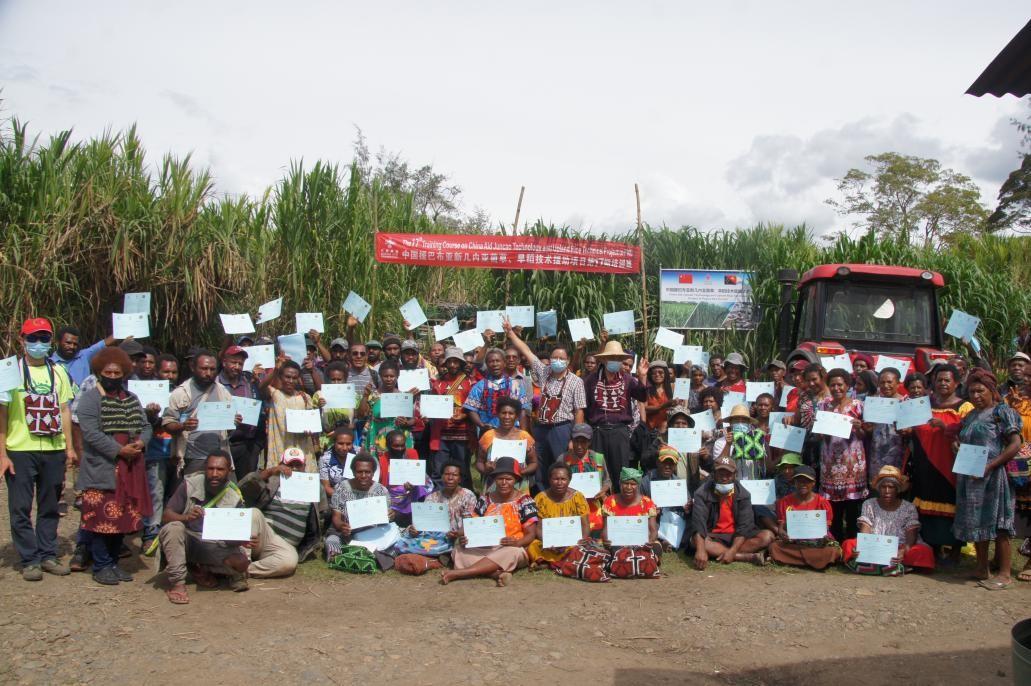
Participants pose for a photo at the seventeenth Juncao grass and upland rice cultivation training at the Juncao and Upland Rice Demonstration Base in Goroka City, Eastern Highlands Province, Papua New Guinea, on 7 April 2022.
Located in the southwest Pacific Ocean, Papua New Guinea is the largest and most populous country in the Pacific Islands region but is also one of the least-developed countries in the world. A very important local industry, the agriculture sector is the main source of income for more than 85% of Papua New Guinea’s rural residents – a group that constitutes at least 86% of its overall population, as a maximum of 14% of its residents live in urban areas.
The nation’s food crops and livestock sector is predominantly based on subsistence and semi-commercial production by smallholders who farm staple root crops, fruits, and vegetables for their own consumption and to sell at local markets, according to the Independent State of Papua New Guinea Department of Agriculture and Livestock’s Agriculture Medium Term Development Plan (2020-2022). Virtually all of the plants that these smallholders grow are rainfed and intercropped, receive a limited amount of input, and produce limited output. The document also notes that pig and poultry production collectively comprise around two-thirds of the livestock subsector, which accounts for approximately 13% of total agricultural production; “broiler production dominates the commercial sector, followed by beef, eggs, and pork,” and that sufficient poultry products are produced to meet internal demand but that other types of animal products come up short.
The Papua New Guinea government thus depends on food imports in order to adequately feed the country’s residents due to the fact that food production levels have not been keeping pace with population growth in the country. For example, in 2018, it spent approximately PGK600 million importing 400,000 tonnes of rice, PGK82 million importing 8.67 million tonnes of meat products, though this figure reflected a sharp decline compared to usual due to a meat import ban that was imposed in order to control African Swine Flu that year, and PGK1.4 million importing 4,720 tonnes of fruits and vegetables.
Chinese citizen and Fujian Agriculture and Forestry University professor Lin Zhanxi is the creator of the technology of Juncao grass as well as several varieties of upland rice, which refers to rice that is grown in rainfed fields rather than flooded rice paddies. They have seen high output in recent decades as a result of research that has been conducted by Lin and his research team.
Lin and his team were invited to visit Papua New Guinea’s Eastern Highlands Province in 1998 and later established a Juncao technology demonstration site in the administrative area’s Lufa District, which enabled the country to produce its own rice. He planted some upland rice in the backyard of a citizen he was staying with named Kopi Manove in order to see if it would be able to grow in the country, and the results were encouraging, so he began introducing the Gold Mountain No. 1 variety that he developed with his research team, which features a broad genetic base and has been known to produce up to 13 harvests over the course of a little over four years if good management and environmental conditions are present but can be susceptible to damage from weeds and seedeaters such as the quelea.
The variety has done well in the nation, and a plot that it was planted on even produced a record high of 8.5 tonnes per ha in one harvest. Also quite beneficial and transformative, Juncao grass can be used as mushroom substrate and feed for animals such as goats, sheep, cattle, horses, pigs, chickens, and even fish; in soil protection endeavours; and in other undertakings and was introduced as well.
A special assistance programme focused on adaptability research, breeding, production, demonstration, processing, training and education, promotion, and marketing known as the China Juncao and Upland Rice Technology Project was launched in Papua New Guinea, which has led to the two plants being cultivated in 17 districts in 9 provinces in the country as of the end of 2022.
Over 4,300 households in Eastern Highlands Province have gotten involved with Juncao-based mushroom farming and have been selling their produce at and to local markets as well as to large supermarkets located in their areas and Port Moresby, the nation’s capital; more than 1,600 households have grown Juncao and used it as feed for livestock and poultry, which has greatly reduced the cost of raising the animals; over 10,880 smallholder farmers and 20 cooperatives and other large growing operations in the province have received support with upland rice cultivation in districts such as Goroka, Lufa, Henganofi, Ugaibena, Daulo, and Kainantu; and the crop is being grown on a total of 1,215 ha of land in them as of the end of 2022. The Eastern Highlands Province government has also been promoting the Juncao and upland rice industries with the goal of them eventually becoming the second and third largest in the administrative area, respectively, after coffee farming.
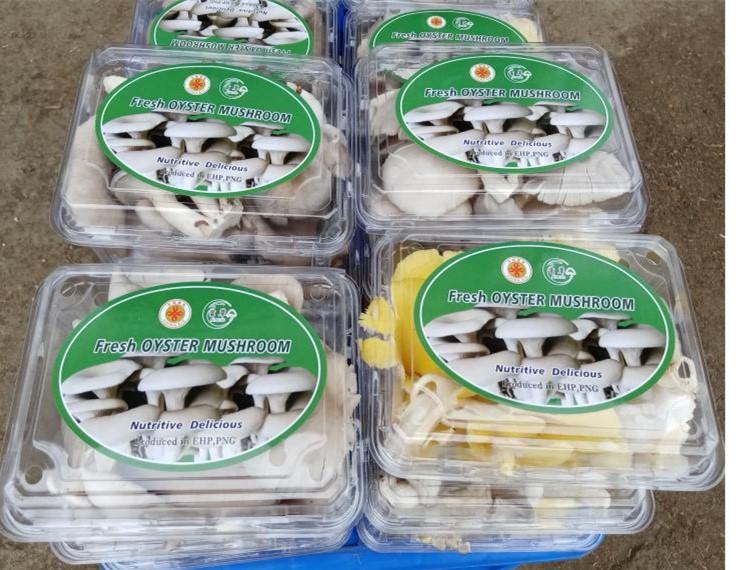
Packaged oyster mushrooms produced by Zaka Abori, a housewife living in a suburb of Goroka. She grew the mushrooms on Juncao substrate and achieved a bountiful harvest.
A housewife with five children living in a suburb of Goroka, Eastern Highlands Province’s capital city, named Zaka Abori, 45, received 300 bags of Juncao substrate mixed with mushroom spores from an exhibition facility that was established in Goroka as the China-aided Juncao and Upland Rice Technology Project began being implemented known as the China Aid Juncao Technology Demonstration Centre on 10 Feb. 2020 and began engaging in a trial cultivation. She was able to harvest 6 kg of fresh mushrooms eight days after she started and cultivated a total of 2,800 bags throughout the year, which resulted in 827 kg of fresh mushrooms, PGK12,413 of revenue, and PGK11,097 of net profit.
In late 2022, the model mushroom grower mentioned that 160 bags can be grown in a 2-sq. m space, that they can produce more than 40 kg of fresh mushrooms in three months, and that this quantity can be sold for around PGK600 to PGK700. Mushroom cultivation requires less land and labour, has a shorter turnaround time, and can generate 20 to 30 times the annual revenue per unit as compared with cabbage farming, which Zaka had previously engaged in.
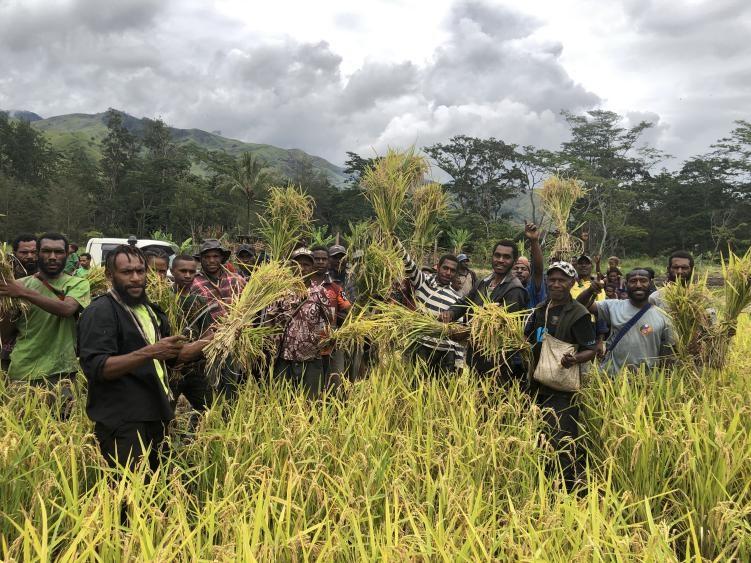
Farmers reap a bumper harvest of highland rice in Finintugu Village, Henganofi District, Eastern Highlands Province, on 6 Feb. 2020.
A remote village in Henganofi, Finintugu had been trapped in tribal fighting from 1994 to 2012, which resulted in nearly 100 deaths, prevented many young people from going to school, and kept the local economy in a backward state. Its residents enjoy eating rice but did not know how to grow it themselves, so they were forced to depend on imports.
The China-aided Juncao and Upland Rice Technology Project designated Finintugu a demonstration site in September 2019, and some of the experts that have been involved began helping residents grow upland rice on 3 ha of unused land so that they could produce their own rice and sustain their livelihoods. They taught the village’s residents how to level the land and cultivate the crop and provided seed and fertiliser free of charge.
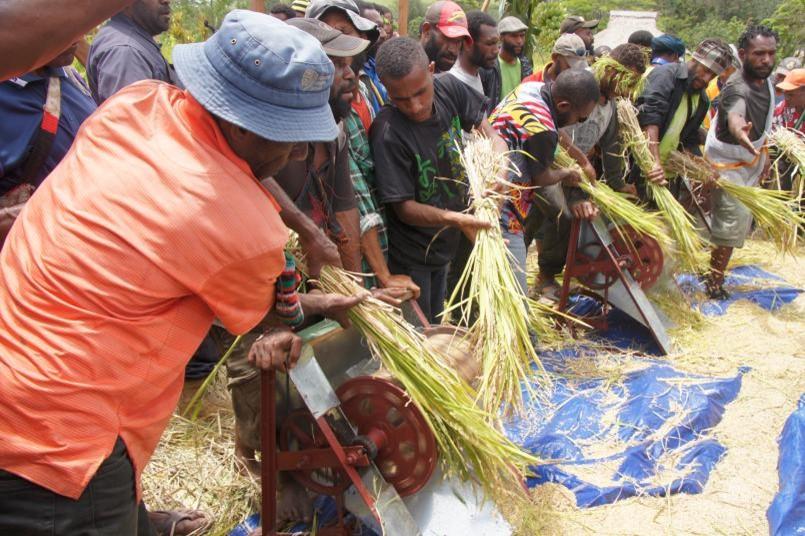
Finintugu residents thresh highland rice using threshing machines donated by China on 6 Feb. 2020.
The following year the 3-ha plot yielded approximately 20 tonnes of unhusked rice and the households that were involved obtained an average of approximately 300 kg of unhusked rice, or 200 kg of hulled rice – four times the amount they had been purchasing annually.
On 14 May 2020, Finintugu gave 1.2 tonnes of rice to the Chinese experts and the Eastern Highlands Province government after achieving a bumper harvest with the intent of it being used as seed that can help the upland rice industry take root and develop in other parts of the administrative in order to express their gratitude.
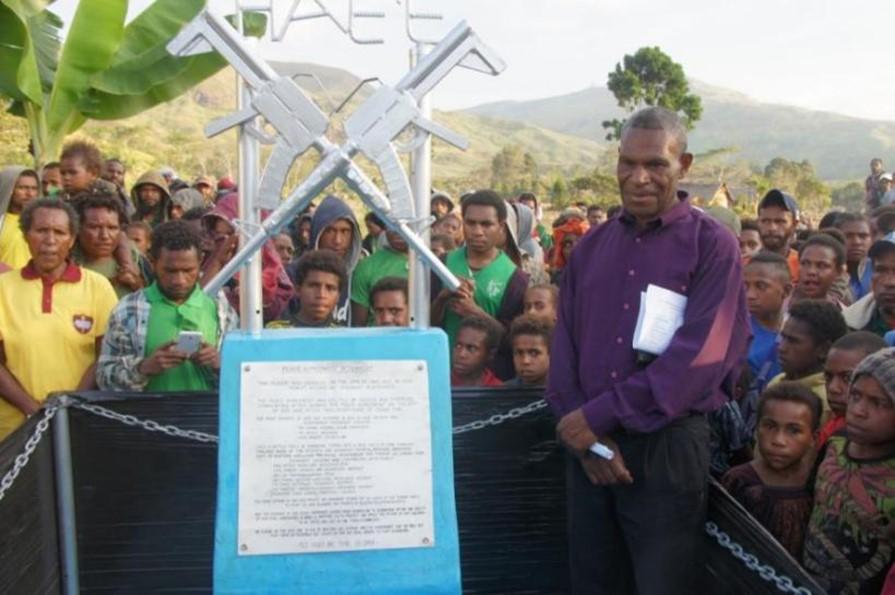
A monument that was erected in order to express gratitude to China for the Juncao and Upland Rice Technology Project and the expert group that has been implementing it is unveiled at a ceremony in Finintugu on 27 Aug. 2021.

For more information, please contact WFP China COE (wfpcn.coe@wfp.org)
Related Links:
Letters from China: Juncao Technology New Path to Sustainable Development
Magical Juncao Grass Boosts Profits, Creates New Opportunities for Farmers in Papua New Guinea
Planting the Seeds of Prosperity
Fujian Helps PNG Innovate with Grass
Juncao Technology -- Breeding Fungi with Herbaceous Plants: From China and For the World
Category
Juncao Grass and Upland Rice Promote Food Security and Sustainable Development in Papua New Guinea
Contributor
Juncao Grass and Upland Rice Promote Food Security and Sustainable Development in Papua New Guinea
Country
Story

